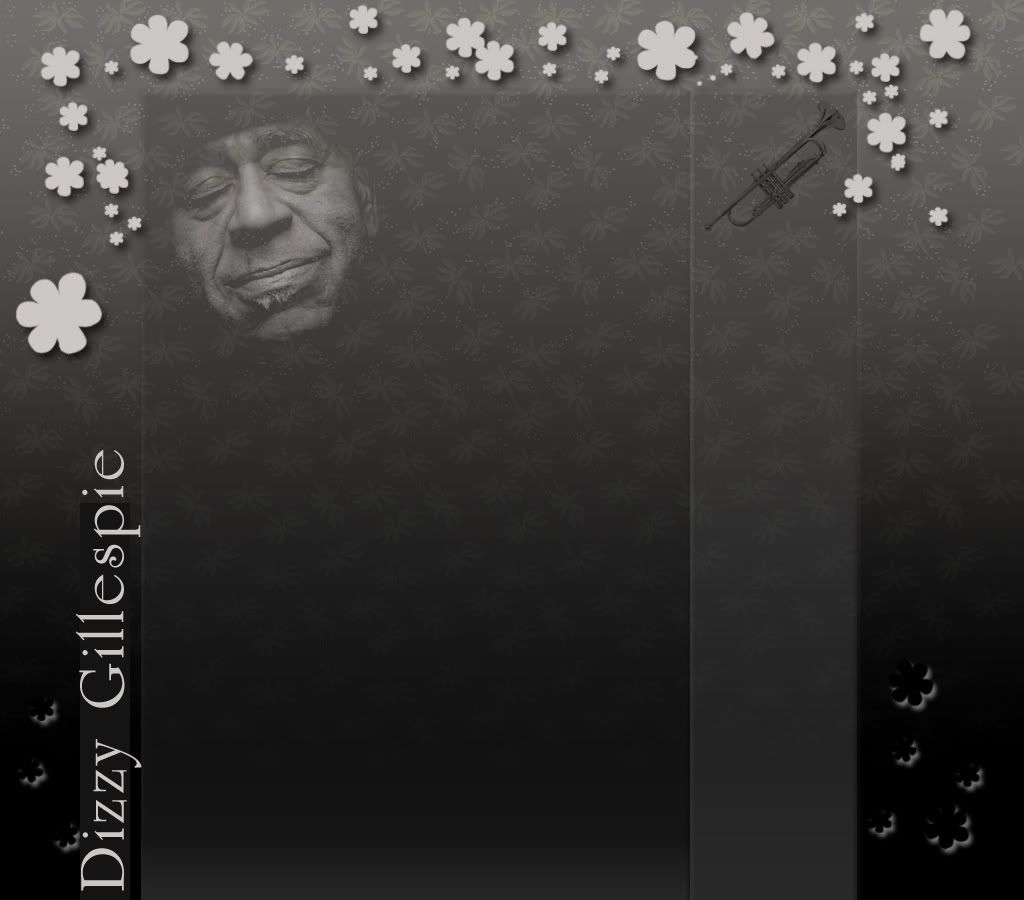John Birks Gillespie was born on October 21, 1917 in Cheraw, South Carolina, the youngest of nine children. He emerged as a trumpet player whose role as a founding father of modern jazz made him a major figure in 20th-century American music. His signature moon cheeks and bent trumpet made him one of the world's most instantly recognizable figures.
Dizzy Gillespie was a featured and favorite performer at the Blue Note Jazz Club in New York. To this date, he remains the only artist to be booked for an entire month at the club! The occasion was his 75th birthday and, sadly, he did not live to celebrate another. Dizzy was loved by all who knew him and is especially missed at the Blue Note, where his memory and his music live on.
In a nearly 60-year career as a composer, bandleader and innovative player, Gillespie cut a huge swath through the jazz world. In the early 1940's, along with the alto saxophonist Charlie (Yardbird) Parker, he initiated be-bop, the sleek, intense, high speed revolution that has become jazz's most induring style. In subsequent years, he incorporated Afro-Cuban music into jazz, creating a new genre from the combination.
In the naturally effervescent Gillespie, opposites existed. His playing - and he performed constantly until nearly the end of his life - was meteoric, full of virtuousic invention and deadly serious. But with his endlessly funny asides, his huge variety of facial expressions and his natural comic gifts, he was as much a pure entertainer as an accomplished artist. In some ways, he seemed to sum up all the possibilities of American popular art.
In 1939, he joined Cab Calloway's band and stayed for two years, then worked briefly with big bands led by Ella Fitzgerald, Claude Hopkins, Les Hite, Lucky Millender, Charlie Barnet, Fletcher Henderson and Benny Carter. In June of 1945, he led his own small band (1945) which later that year was augmented into a big band. During the late 1940s, 1950s and 1960s, Dizzy alternated between leading small and big bands. Dizzy also did concert tours as a soloist with the "Jazz At The Philharmonic" presentations. He continued to do widespread touring during the late 1970s, mainly with a quintet, with many overseas visits to Africa, Australia, Cuba, Europe, etc. Gillespie was featured at President Jimmy Carter's 1978 White House Jazz Party and induced Carter to provide the vocals for a rendition of "Salt Peanuts."
In the last decade, his career seemed recharged, and he became ubiquitous on the concert circuit as a special guest. New York Times writer Peter Watrous in decribing Dizzy's month long engagement at the Blue Note wrote, "In honor of his 75th birthday, Mr. Gillespie played for four weeks at the Blue Note in Manhattan in a stint that featured perhaps the greatest selection of jazz music ever brought together for a tribute." Dizzy Gillespie died of cancer on January 6, 1993.
In 1960, Gillespie was elected by the Readers into the Down Beat Hall of Fame.
Source: dominic.preuss@duke.eduLabels: Biography


 Dizzy has a star on the Hollywood Walk of Fame at 7057 Hollywood Boulevard in the Hollywood section of the City of Los Angeles.
Dizzy has a star on the Hollywood Walk of Fame at 7057 Hollywood Boulevard in the Hollywood section of the City of Los Angeles.

 From left to right:
From left to right:  William Gottlieb
William Gottlieb
